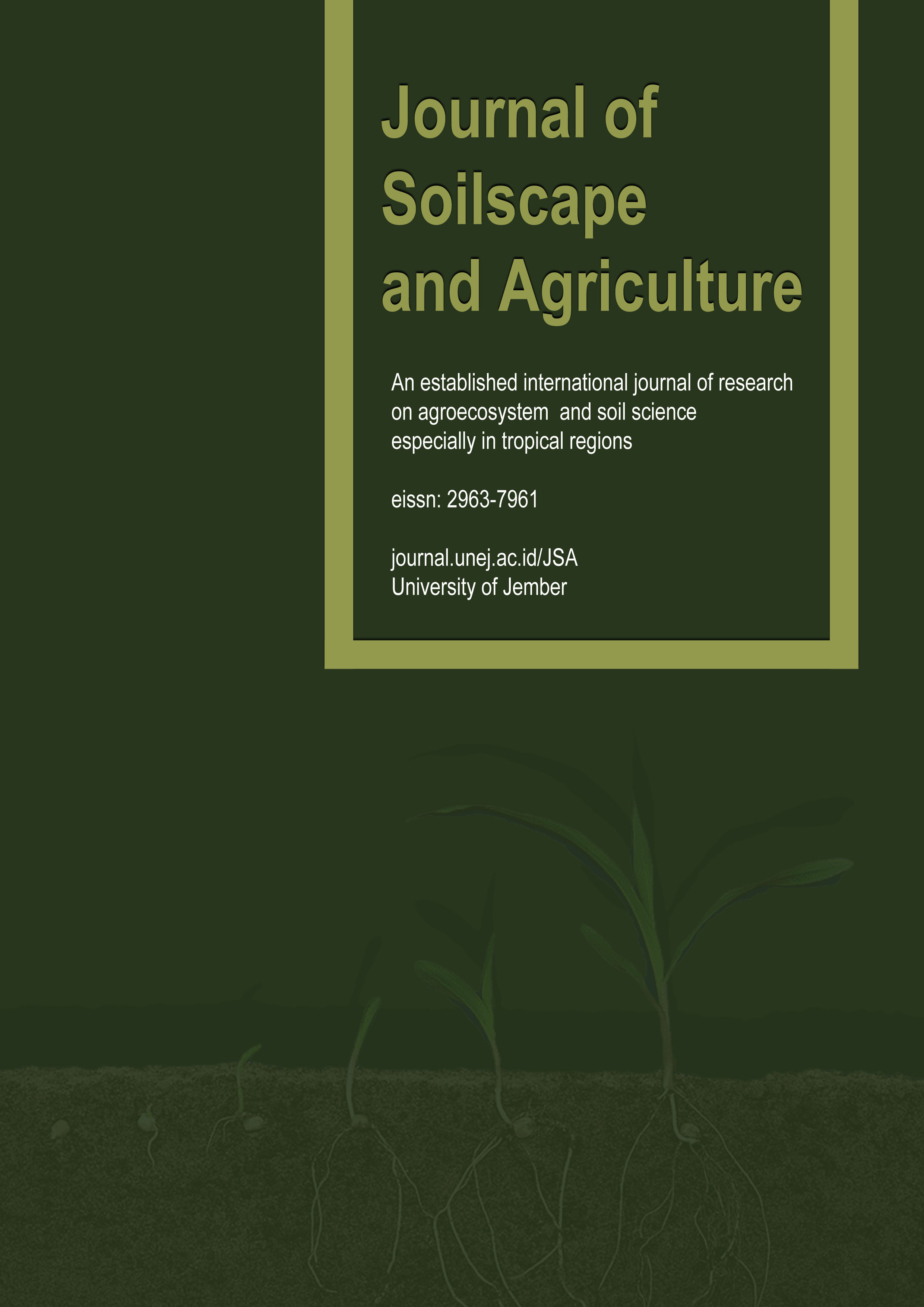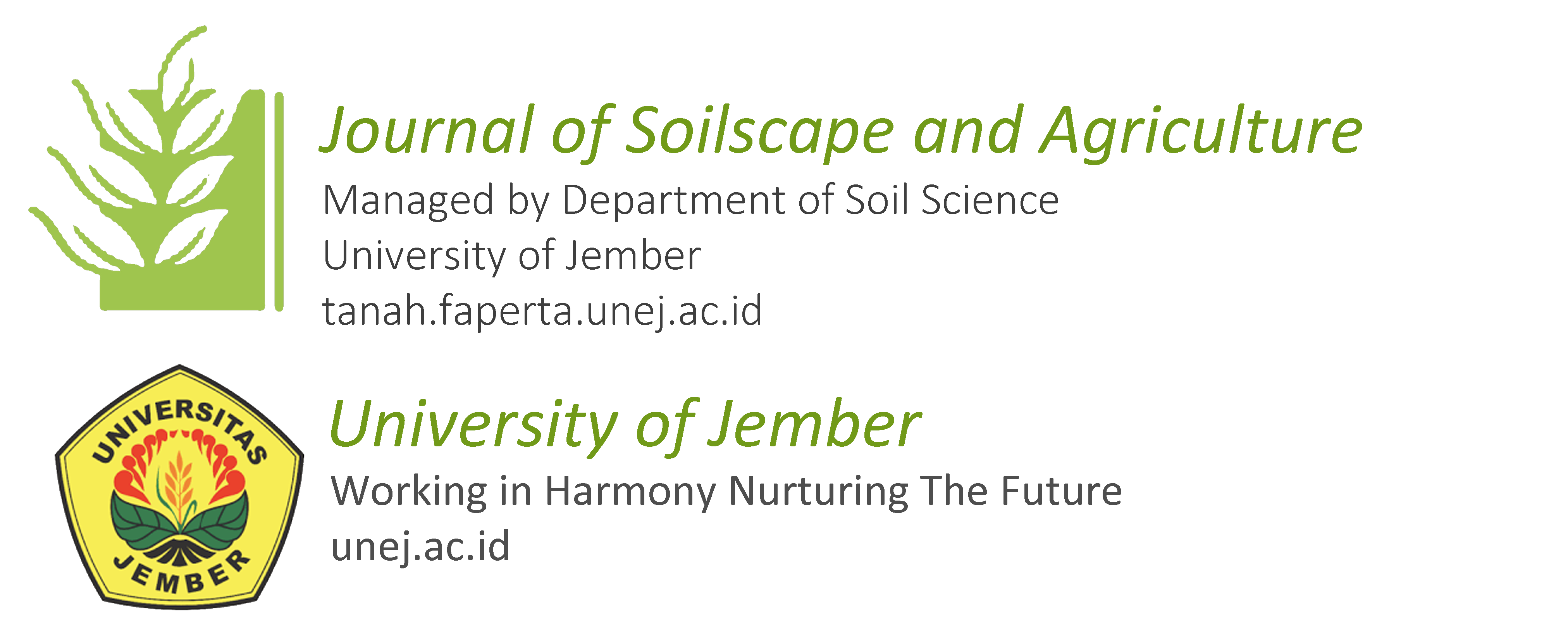Analysis of Domestic Water Availability and Demand As Well As The Economic Value Of Laabhalano Spring Pola Village, Pasir Putih District, Muna Regency
DOI:
https://doi.org/10.19184/jsa.v3i2.4561Keywords:
Economic Value; Laabhalano Spring; Pola Village; Water Availability; Water DemandAbstract
Laabhalano Spring in Pola Village, Pasir Putih Subdistrict, Muna Regency, serves as the local community's primary source of clean water. However, the sustainability of this water source is under threat due to environmental degradation, such as deforestation and land-use changes, which could impact both the quality and quantity of the water. This study aims to analyze water availability, and domestic water demand, and assess the economic value of the environmental services provided by Laabhalano Spring. The methods used in this research include measuring the water flow and surveying domestic water needs in 82 households in Pola Village. The findings show that the water flow from Laabhalano Spring is 110,376 m³ per year, sufficient to meet the community’s domestic water needs. Total domestic water consumption is 330 m³ per month, primarily for bathing, washing, and daily consumption. Additionally, the economic value of this clean water service is estimated to be IDR 137,700,000 per year, highlighting the critical role of this spring for the local community’s livelihood. While the current water flow is adequate, the threat to the sustainability of the spring remains, especially if the surrounding ecosystem is not properly managed. Therefore, sustainable environmental management is essential to ensure a continuous clean water supply for the residents of Pola Village. Strengthening conservation efforts and monitoring the surrounding environment are key to preserving both the quality and availability of water in the future
References
BSN. (2002). SNI 19-6728.1-2002 Preparation of Resource Balance - Part 1: Spatial Water Resources. Jakarta.
Hidayat, F. (2016). Economic Valuation for Water Resources Development of Upper Mahat Watershed. Agrium Journal, 13(2), 44-52. https://doi.org/10.29103/agrium.v13i2.1897.
Kahirun, La Baco, S., Nasaruddin, & Yunus, L. (2019). Forest Ecological Diversity in the North Buton Wildlife Reserve (SMBU) Forest Area in Eelahaji Village, Kulisusu District. Ecogreen, 5(1), 13-22. ISSN 2407-9049.
Kasim, S., Midi, L., & Juliana. (2015). Valuation of Hydrological Environmental Services of Lakomea Village Production Forest, Landono District, South Konawe Regency. Ecogreen, 1(2), 25-38. ISSN 2407-9049.
Kustanto, A. (2020). Dynamics of population growth and water quality in Indonesia. Journal of Economics and Development (JIEP), 20(1), 12. ISSN (P) 1412-2200, E-ISSN 2548-185.
Lopis, R. A., Laoh, O. E. H., & Sondakh, M. L. (2017). Water resources valuation (a case study of Tatanyan spring area in Kinilow I Village, North Tomohon Sub-district, Tomohon City). Agri-Socioeconomics, 13(1A), 91-100. https://doi.org/10.35791/agrsosek.13.1A.2017.14961
Mustofa, R. (2020). Economic analysis in the management of water supply ecosystem services in Tapung Kiri Sub-watershed. Journal of Research Innovation, 1(5), 1033-1042. https://doi.org/10.47492/jip.v1i5.187
Pravitasari, A. G., and Nugraheni, N. (2024). Transforming education towards sustainable conservation: Building environmental awareness and care for future generations. Socius: Journal of Social Sciences Research, 1(9), 6-11. https://doi.org/10.5281/zenodo.10928962
Said, M. F. N., & Sudarmadji, S. (2014). Assessment of the Availability and Use of Water from Springs for Domestic Needs in Turi District, Sleman Regency. Jurnal Bumi Indonesia, 3(2), 1-10.
Santoso, H. (2024). Forest, soil, and water management based on watershed management and its relation to regional spatial planning. National Watershed Forum. Accessed from https://www.saranawanajaya.or.id on December 26, 2024.
Suryani, A. S. (2016). Public perception on the use of clean water (A case study of communities living along the rivers in Palembang). Aspirasi, 7(1), 33-48.
Suryawan, I. N. (Ed.). (2021). Contestation of Village Strengthening and Balinese Ecotourism. Denpasar: Pustaka Larasan. ISBN 978-623-6013-35-9.
Suryanti, I., and Wijayanti, N. P. R. (2023). The role of community participation in dam maintenance on sedimentation at the Benel and Palasari Dams, Jembrana Regency. International Journal of Community Service Learning, 7(4), 407–414. https://doi.org/10.23887/ijcsl.v7i4.64573.
Warih, H. A., & Fajarwati, A. (2013). Study on Community-Based Water Management (Case Study of Karangrejek Village, Gunungkidul Regency). Journal of Bumi Indonesia, 2(1), 187-196
Downloads
Published
How to Cite
Issue
Section
License
Copyright (c) 2025 Journal of Soilscape and Agriculture

This work is licensed under a Creative Commons Attribution-NonCommercial-ShareAlike 4.0 International License.



